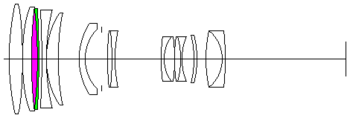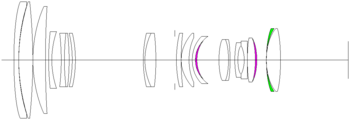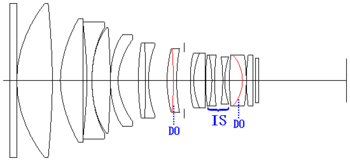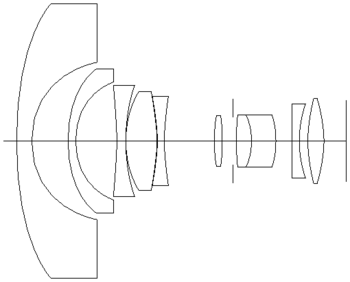Quick Post
I'm just travelling around a bit at the moment and I'm unable to format or research these patents thoroughly. I'm sure some of you will tear it apart. A better translation would be appreciated.
This Japanese site has posted some Canon patents he/she has found.
This is a direct email quote
Based on his investigation Canon made following patents.
EF300/F4 IS II with plastic lens.
http://egami.blog.so-net.ne.jp/2009-12-17

This would be a welcomed lens by many.
EF70-210/F4 IS II with plastic lens
http://egami.blog.so-net.ne.jp/2009-12-12

Not sure this lens needs an update yet.
EF300/F2.8 DO IS and EF 400/F4 DO IS with new double DO and IS
http://egami.blog.so-net.ne.jp/2009-12-02

A lot of DO patents popping up. A lot of people ask for smaller and lighter lenses.
EF 15-24/F3.5-4.5 Fish eye zoom (not EF-S)
http://egami.blog.so-net.ne.jp/2009-11-27

I think this would be a great fisheye solution. It wouldn't cost a lot at first sight.
CR's Take
All make some sense outside of a new 70-200 f/4L IS.
View more lens patents here
Thanks Mitsu
cr

48 Comments
I have the current 400mm F/4.0 DO IS lens and love it. It is (relatively) short and light, and I’ve had excellent results with it. Seems to me that the bokeh complaints are from people who haven’t used the lens. As you go up in the higher telephoto ranges, the background bokeh is affected at least as much by atmospheric conditions as lens character, as your subjects are typically farther away. I shot this photo of a grizzly bear in Alaska last year with the DO lens and am very happy with it. Check it out – http://www.flickr.com/photos/26317521@N00/3726024358/sizes/l/
That 300mm f/2.8 diagram looks suspicious to me. The second element looks too strong (too short of focal length).
Another rather nasty property of plastics is for it to darken with age and heat cycling. Some plastics last longer, but its always a tradeoff, you can’t have everything you want.
I have a large plastic lens from a B25, made in the 1940’s still in its original crate. Its absolutely beautiful, crystal clear with no darkening. As near as I can tell, searching parts lists and drawings, it was a test item and never went on production B25’s. It is a very interesting relic though. I hate to think what something like this cost in today’s dollars.
“To make a lens smaller and lighter, the spacing between the elements is shortened and the refractive properties of the front and rear lens groups are made more pronounced. This, however, results in increased chromatic aberration. To resolve this problem, the Multi-Layer Diffractive Optical Element is located within the lens to cancel out the occurrence of chromatic aberration. Compared with conventional super telephoto lenses, the prototype EF 400mm f/4 DO IS USM lens, measuring 233 mm in length, is about 26% shorter and, weighing 1,930 grams (including the 140 gram tripod collar), about 36% lighter. ”
It does help reduce the weight. As you grow older, lighter lenses are welcome.
Yes, DO is just another name for a Fresnel lens – the same thing used in lighthouses since decades, but pushed to much better image quality. When you look at the cross section of a DO element (in the patents or in Canon’s description of the 400 f/4 DO), you see a sawtooth-like structure. The quality of the image will depend critically on the details of the “teeth”, in particular, on how sharp you can make the edge.
I would expect that DO elements are easier to make for long focal lengths – the shorter the focal length, the steeper the “teeth” become towards the outside of the lens. For the same reason, they are easier to make for moderate apertures, i.e. a 400 f/4 is much easer to make than a 400 f/2.8.